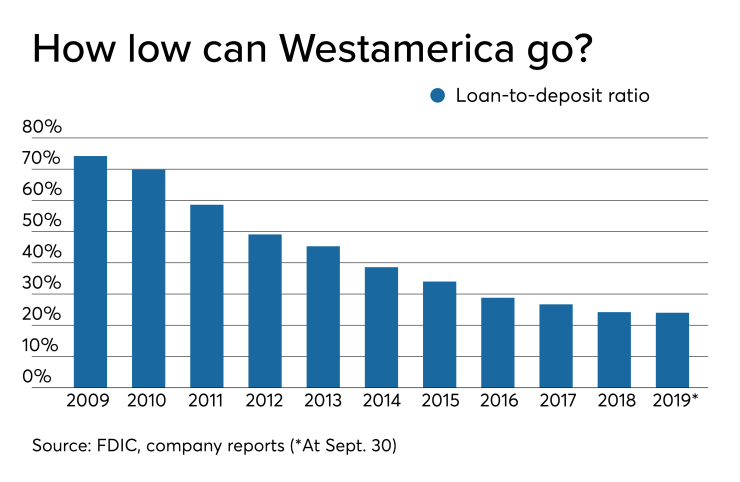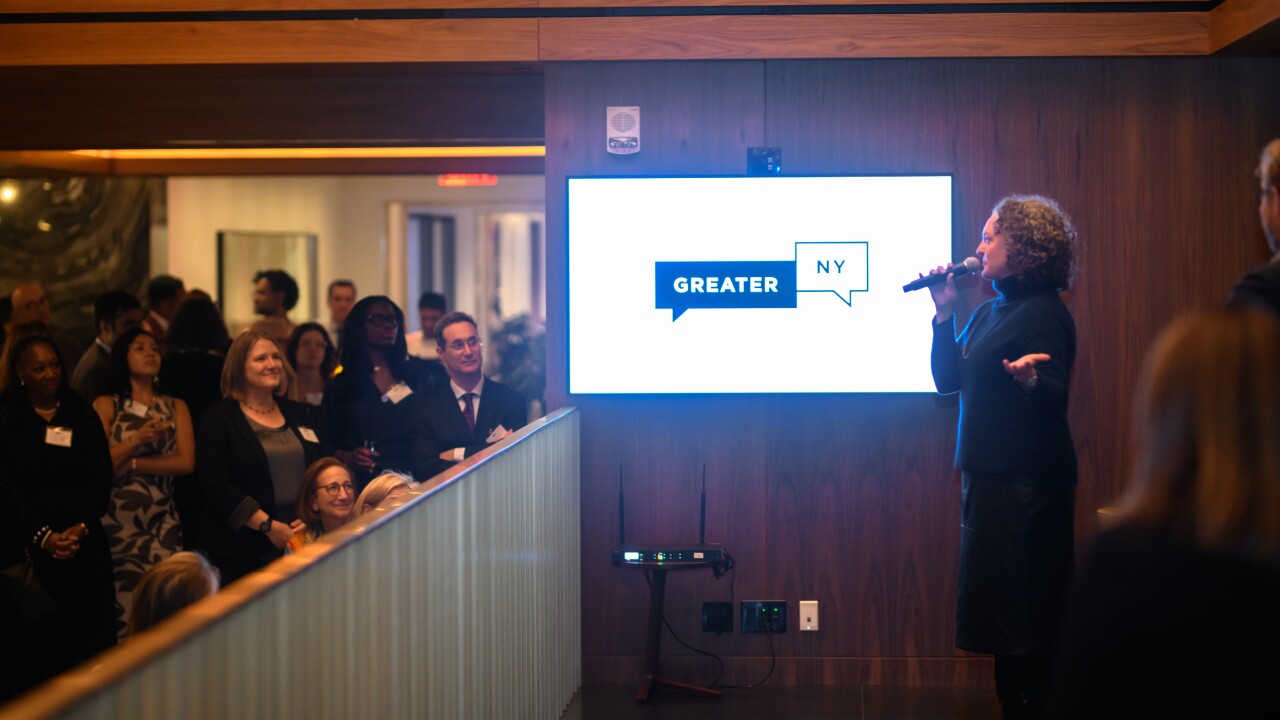Westamerica Bancorp in San Rafael, Calif., appears ready to come off the M&A sidelines, but will it be as a buyer or seller?
The once-acquisitive company hasn’t bought a bank in 15 years, but Chairman and CEO David Payne said that conversations with potential targets have heated up in recent months as falling interest rates have crimped banks’ profit margins and dimmed growth prospects.
His preference is to acquire, but Payne said his instructions from Westamerica’s board of directors is to “keep looking at all alternatives…whether that’s buying or selling.”
What the $5.5 billion-asset company won't do to spur growth is accelerate its lending.
Payne, who has been CEO since 1989, made a strategic decision years ago to shrink the bank’s loan book and shift assets into securities rather than make loans at rates he has long viewed as irrational. Loans on its books have declined by 65% over the past decade, to $1.1 billion at Sept. 30, and its ratio of loans to deposits has plunged from 74% in 2009 to around 24% today.

Profits, though, have hardly suffered because the bank is highly efficient and has an enviable base of low-cost deposits, noted Aaron Deer, a managing director at Sandler O’Neill who follows West Coast banks.
“The loan book has been shrinking, but the real value in any bank is on the deposit side,” Deer said. “Despite it being one of the most competitive deposit environments we’ve seen in a long time they’ve continued to grow deposits.”
Deer added that investors are “comfortable” with Westamerica’s conservative approach to lending, though Payne acknowledged that there are some institutional investors who would like to see the company take a bit more risk.
In an interview, Payne explained why Westamerica has been so conservative over the years, what it would take for the bank to hit the gas a bit and why M&A may once again be in its future. The interview has been edited for length and clarity.
American Banker: You’ve taken a very conservative stance on writing new loans. When do you see this turning around?
David Payne: There’s been a tremendous amount of aggressive pricing certainly in our markets. Sometimes that pricing comes at a level where it’s either not profitable or not as profitable as we would want it to be in order to justify the lending. It’s been a combination of being conservative and loan pricing being aggressive.
Every time I think loan pricing is going to be a little more rational it isn’t. My hope would be that a little more rational loan pricing would lead us to develop some loan growth in the next four years. I have to be cognizant of the economy, the prospects of a recession.
What are some examples of aggressive lending you’re seeing?
We’re comfortable on commercial real estate loans of five or six years. We are seeing fixed rate for 15 to 20 years. I don’t have the kind of hedging strategy to manage against that. We are a traditional balance sheet [lender]. I’ve [also] seen an increase in CRE rates at a relatively low yields. If that started to abate or fall away, that would make us more inclined to lend.
What are you hearing from investors? Are they wanting to see more loan growth?
We have a number of institutional investors. I suspect they would like a little more loan growth but they like the safety and security of the bank. We’re seen as a conservative bank that follows a certain path.
Do you think the banking industry as a whole is taking on more systemic risk than people realize?
Underwriting standards have held up much better in this cycle so far than I’ve seen historically. There has been much more care taken. That doesn’t mean some banks haven’t moved out a little bit on the aggressive standard. I don’t think there are the kinds of lending or underwriting practices that lead to market problems at this point. I’m not seeing that.
What are your thoughts on M&A going forward? You were pretty active for some years. Have you been approached for a potential deal recently?
We look at all alternatives. Our focus is on acquiring. General conversations between potential sellers has picked up some. There seems to be more conversation around some banks, whether it makes sense to combine. There has not been a lot of activity out West here. My instructions from the board are to keep looking at all alternatives…whether that’s buying or selling. There are clearly some headwinds in net interest margin and revenue sources. It’s already begun. I think people are looking at [mergers and acquisitions] realistically.
What are the bank’s plans for finding the balance between new technology and physical branches?
We’re constantly trying to get the level of service to improve. We’re seeing a quantum shift in customers using electronics over visiting brick-and-mortar locations. Time and energy is being spent to develop proper technology to give them that kind of access. There will probably be some new locations perhaps and some consolidation in markets with multiple branches.





